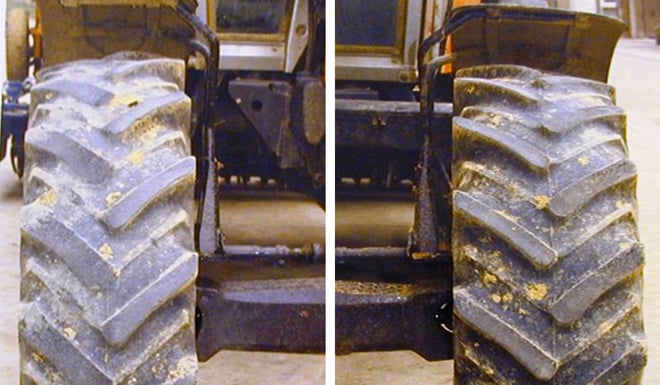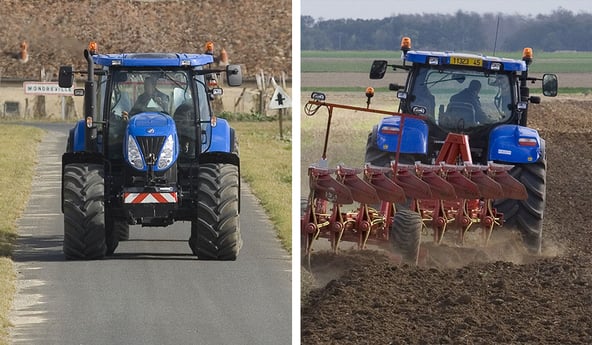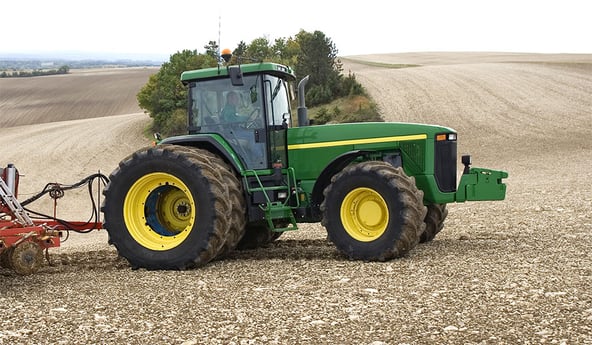You notice an abnormal wear to your tractor’s front tyres and plan to replace them. However, the first step might be to establish precisely why your front tyres have worn quicker than your back tyres.
And if the cause of this wear wasn’t your use on the road or in the fields, nor the tractor tyre pressure settings, but simply a problem linked to mechanical devices?
Here are the most frequent causes of this type of wear:
Wear should be regular over the 4 tractor tyres, this normal wear corresponds to the chafing of the rubber against the different surfaces encountered: rocky soils, road surfacing…
If you notice more deterioration of the front tyre than the back tyre or the other way around, that means the problem is coming from elsewhere, and simply replacing the tyre with a new agricultural tyre will certainly not solve the problem. So how do you limit the wear to the tyre?
What are the possible causes of abnormal wear to the front trator tyres alone?
1. Abnormal wear of my tractor tyres linked to a sloping road
The problem could come from driving frequently on a sloping road (cambered road). In this case, there is identical wear to the exterior right tyre (the tyre on the irregular outer edge of the road) and the interior left tyre.
This type of wear appears as a result of the permanent correction of steering towards the left to keep the tractor going straight along the road.
In this case, there is no real solution other than using a different road wherever possible. If you are obliged to take the cambered road, you will have to swap the tyres over when they become too worn to compensate for this wear (but this solution will not spare your equipment).
2. Wear to the front tyres linked to misalignment of the front axle
If wear to the two front tyres is even, you will have to check the parallelism.
There will be considerable and regular wear but without burrs at the level of the external lugs, in this case, it is tilt of the wheel that has become deregulated.
There are multiple possible causes for this, but it is often the result of a knock to the coupling rod which may have become slightly bent resulting in either a toe-in or toe-out scenario.
- In the case of toe-in: there will be wear to the exterior edge of the tyre.
- In the case of toe-out: there will be wear to the interior edge of the tyre.
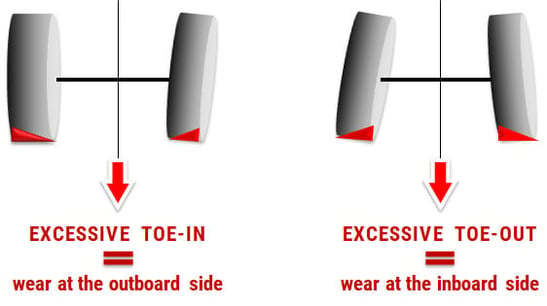
Misalignment
You can check your parallelism yourself with a tape measure and measuring device.
Place your tractor on a perfectly flat surface, then measure the distance from the centre of the wheel to the ground, draw a line in front of the tyre, then with the help of another person, measure the exact difference between your two front wheels at the level of your line.
Drive your tractor forward slightly, half a wheel rotation, then take the same measurements.
In general:
- For 2 drive wheels, the tolerance is: 0 –3 mm toe-in
- For 4 drive wheels, the tolerance is: 0 à –4 mm toe-in and 0 à -+4 mm toe-out
If the measurements that you take are not within the tolerance range, the parallelism needs to be adjusted.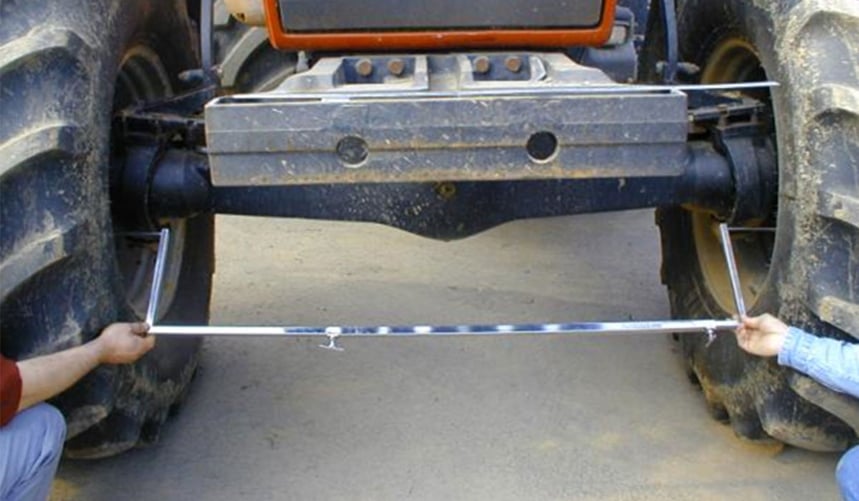
Make sure you check the parallelism of the front wheel axel unit periodically in order to avoid this type of problem. Moreover, it’s not because your tractor is new that you are not vulnerable to this type of problem, pay attention to the condition of your tyres because with new tractor tyres that the front wheel axel seems to be frequently out of sync right from the start.
3. Abnormal wear of agricultural tyres linked to steering unit problems
Mechanical problems are often the cause of abnormal wear to agricultural tyres. There are many possible reasons, but one of the most frequent involving the front wheel axle unit is linked to its settings and adjustments. If there is too much slack in the ball joints, bearings or pivot pins, the wheels may get out of sync with the centreline of the tractor.
In this case, the appearance of wear is more accentuated on one or two shoulders to begin with. It may extend to the width of the tyre but remains predominant on the shoulder, the tread face is rippled with traces of scraping and burrs.
Mechanical repairs are necessary to avoid wearing out your new set of agricultural tyres too quickly.
Of course, several causes may combine, such as a cambered road and a misalignment problem. In this case, wear will be more accentuated on one of the front tyres alone.
Bridgestone-agriculture Blog is written and administered by tractor tyre experts who are available to provide you with advice on agricultural tyres. They will help you to maximise your productivity with information on all things relating to tyres: inexpensive tractor tyres, technical data for agricultural tyres, solutions for avoiding soil compaction, sprayer tyre pressure, why and how to ballast your tractor tyres, when to use dual-wheels, the mechanical causes for abnormal wear, discounted agricultural tyres, etc...
To learn more about ways to increase your farm’s productivity, bridgestone-agriculture has created a comprehensive eBook on the topic which is available for you to download for free:
Most people who read this article have also read some of the following articles:
This information is intended only to make you aware of the technical and functional aspects of agricultural tires and their use. It does not allow you to make a judgment or a definitive conclusion on a given problem. Only your agricultural tire expert is able to make a technical assessment and take a final decision, case by case.
Leave a
commentary
Your email address will not be published.
Required fields are indicated with *


